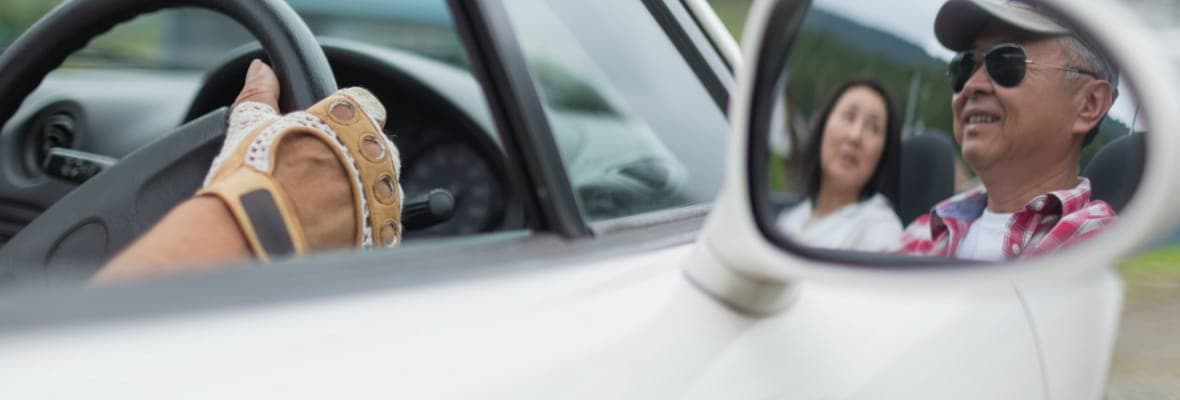Related articles
- 9 road safety tips for your teen learner driver
- Distracted driving facts
- 5 simple ways to make your car safer
- How to Safely Share the Road With Non-Motorists
- 9 tips for staying safe in service stations
- Child Car Seat Laws And Regulations
- How to reduce the risks to children of reversing cars
- The must have car safety features in modern cars
- What cars have ISOFIX in Australia
- ANCAP safety ratings explained
- How to reverse park
- How to Avoid or Minimise Hail Damage to Your Car
- School road safety tips for families
- Staying safe in your car
- Using mirrors correctly to eliminate blind spots
- How to choose, install & adjust your children’s car seats
- Driving safety tips
- Give way rules - Who goes first?
- Sharing the Road Safely With Heavy Vehicles
- Do you know your road signs?
- What to do after a car accident
- What To Do in Event of a Crash with Wildlife
- How to drive safely in wet weather
- Why are young drivers considered high risk?
- Which Australian state has the strictest road rules?
- 10 Obscure road rules you didn’t know existed in Australia
- Which states and cities in Australia have the most motor vehicle thefts?
- Learner Driver Restrictions Australia
- Learning How to Drive
- Supervising a Learner Driver: What are the rules?
- Electric Scooter Laws in Australia
- School Road Safety for Kids
Disclaimer: This information is general in nature only. While Budget Direct has endeavoured to ensure the information we’ve relied on is accurate and current, we do not guarantee it. Budget Direct accepts no liability for this information.
With a drivers licence and a car, we can go virtually anywhere we want in Australia.
But as we enter our golden years, we’re faced with the prospect of losing that freedom because of age-related physical and/or cognitive impairments.
These impairments can pose a safety risk to older drivers and others on the road.
Consequently, Australia has special requirements for older drivers — specifically those 75 years or older — who wish to maintain their drivers licence.
These include medical check-ups to confirm one’s fitness to drive and, if necessary, practical driving tests.
Licensing requirements
The following table summarises the rules surrounding the licensing of older drivers in the respective states and territories:
| Drivers 75 years or older | |
|---|---|
| Are required each year to get a doctor to certify they’re fit to drive | Are encouraged to self-assess their driving ability and, if necessary, have a medical check-up to confirm they’re fit to drive |
|
Western Australia (80 years or older) |
|
In addition:
- In NSW, drivers 85 or older who wish to keep their unrestricted licence are required to pass a practical driving test every two years; or else they can take out a modified licence.
- In WA, drivers 85 or older must pass a practical driving test if a health professional recommends one.
Note: This information was current on 2 December 2020.
Conditional licences
Rather than having their licence revoked and losing their independence completely, some elderly drivers are allowed to drive on a conditional licence (also known as a restricted or modified licence).
A conditional licence identifies medical treatments, vehicle modifications and driving restrictions that would enable the person to drive safely.
For example, if a driver has a left-arm or left-leg disability, they may be restricted to cars with automatic transmission.
Or if they’re prone to inattention, they may be confined to driving during off-peak hours only, within a 20km radius of their home, in daylight hours, and/or on roads other than freeways.
Reportable medical conditions
Regardless of your age, you’re legally required to report any long-term or permanent injury or illness that may affect your ability to drive safely.
This must be done at the time the condition occurs, not just when renewing your licence.
After you’ve notified them, the driver licensing authority (DLA) in your state or territory may ask you to undergo an assessment of your fitness to drive.
Depending on the outcome of the assessment, your drivers licence may be maintained, suspended, cancelled, or made conditional.
If you don’t report an impairment to your DLA, you could be held legally liable if you cause an accident.
National medical standards for driver licensing
Assessing Fitness to Drive is a joint publication of Austroads and the National Transport Commission.
It sets out driver-licensing medical standards that health professionals and driver licensing authorities can use to respectively assess their patients’ fitness to drive and make licensing decisions.
While it’s not aimed at drivers, this publication can help you understand how certain medical conditions, disabilities and treatments can affect drivers’ perception, judgement, response time and physical capability behind the wheel.
It also outlines the roles and responsibilities of drivers.
Not fit to drive?
If you’re convinced your licensed elderly parent or other relative shouldn’t be driving at all, based on their deteriorating health or unsafe driving, now’s the time to address your concerns — for their safety as well as other road users.
Before speaking to your loved one about hanging up the keys, try to understand what emotions and everyday problems the loss of driving privileges could bring.
Elizabeth Dugan, geriatric researcher and author of The Driving Dilemma, says one of her colleagues refrained from driving for two weeks before having the safety discussion with her father, a senior.
By doing so, you too can experience and understand the substantial reduction in your elderly parent’s mobility and independence.
Once you’re ready to address the issue, do it gradually. David Solie, geriatric psychologist and author of How to Say It to Seniors, recommends giving your dear elder the opportunity to reflect on his situation in between four short conversations:
Conversation 1
Bring up the obvious signs of their driving difficulty, but choose your words carefully, says Solie.
“It’s important to have some guiding values. Start by saying, ‘I’ve always told you the truth, even when it’s difficult.’”
Then, you can explain what you’ve observed — whether its erratic driving, fines and demerit points, or dents or small collisions.
Be understanding: Your favourite senior might already know they have an issue and come clean.
Conversation 2
Emphasise the critical nature of their problem by offering facts or statistics as proof.
For example, according to the Centre for Accident Research & Road Safety (CARRS-Q), though the risk of being involved in a crash is lower amongst senior adults in terms of rate per population, the risk of being killed in a crash is higher due to their increased fragility.
Victoria’s Transport Accident Commission says drivers aged 75 years or over have a higher risk (per distance travelled) of losing their lives in a crash than any other age group.
Conversation 3
Discuss the driving-safety implications of getting older, including any medical conditions your elderly relative has.
These could include the side-effects of medications; loss of strength and increased joint pain (making it difficult to work controls or steer, for example); and impaired vision and hearing.
Conversation 4
Help your loved one plan how to get around without a car.
Alternative options include public transport, offering to drive him to a favourite activity once a week, personal driving services, and carpooling with friends.
“You’re not saying, ‘Give me the keys',” says Dugan, “but ‘I care for you and I want you to be as healthy, mobile and independent as possible. If you can’t drive, then we’ll work together to figure out something else’.”
Keep the car insured
Of course, you’ll want to make sure any car your elderly relative continues to drive is insured against damage or loss.
If you’re looking for a competitive price on car insurance, get a quote from Budget Direct.
As long as your favourite senior has a valid licence and complies with its conditions and any restrictions, Budget Direct can offer comprehensive insurance to cover their car as well as any other cars or property their car causes damage to.
Sources
1. https://www.helpguide.org/articles/aging-well/age-and-driving-safety-tips.htm#warning
2. https://www.caring.com/articles/when-should-seniors-stop-driving
3. https://www.nextavenue.org/when-its-ok-not-tell-truth-elderly-parents/
4. https://www.smh.com.au/national/elderly-drivers-as-dangerous-as-young-hoons-says-geriatrician-20150503-1myys4.html
5. https://www.vicroads.vic.gov.au/licences/health-and-driving/how-ageing-can-affect-your-driving
Related articles
- 9 road safety tips for your teen learner driver
- Distracted driving facts
- 5 simple ways to make your car safer
- How to Safely Share the Road With Non-Motorists
- 9 tips for staying safe in service stations
- Child Car Seat Laws And Regulations
- How to reduce the risks to children of reversing cars
- The must have car safety features in modern cars
- What cars have ISOFIX in Australia
- ANCAP safety ratings explained
- How to reverse park
- How to Avoid or Minimise Hail Damage to Your Car
- School road safety tips for families
- Staying safe in your car
- Using mirrors correctly to eliminate blind spots
- How to choose, install & adjust your children’s car seats
- Driving safety tips
- Give way rules - Who goes first?
- Sharing the Road Safely With Heavy Vehicles
- Do you know your road signs?
- What to do after a car accident
- What To Do in Event of a Crash with Wildlife
- How to drive safely in wet weather
- Why are young drivers considered high risk?
- Which Australian state has the strictest road rules?
- 10 Obscure road rules you didn’t know existed in Australia
- Which states and cities in Australia have the most motor vehicle thefts?
- Learner Driver Restrictions Australia
- Learning How to Drive
- Supervising a Learner Driver: What are the rules?
- Electric Scooter Laws in Australia
- School Road Safety for Kids



